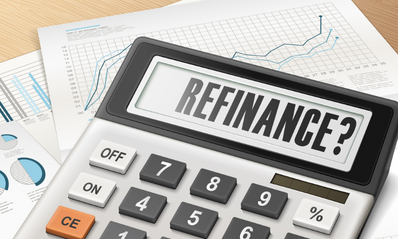Benefits Of Using A Refinancing Calculator

What exactly is financing?
Refinancing a loan is taking out a new loan, typically with better conditions, to settle an existing one. Refinancing terms and conditions might be very different. Refinancing is more frequently related to school loans, auto loans, or mortgages for homes, and online refinancing calculators can be helpful in calculating these. Old loans secured by collateral, or assets that guarantee loans, may be converted to new loans. Instead of debt replacement, debt restructuring refers to reducing and renegotiating past-due loans to improve or restore liquidity.
Reasons for refinancing frequently
The time and money spent on a refinance are worthwhile for the following reasons:
- A lower interest rate is possible, and the potential to lower your interest rate is the primary justification for refinancing. Access to a lower interest rate can save you a tonne of money throughout the loan, whether or not the market has changed or your credit has significantly improved since you first obtained your mortgage. However, unless you acquired your original mortgage at least ten years ago, you are unlikely to save considerably in the current rate environment.
- An alternative type of loan is available. Maybe you want to convert from the unpredictability of an adjustable-rate mortgage to a fixed-rate mortgage, or perhaps you want to use a conventional loan to cease paying FHA mortgage insurance. You can examine every form of home loan available through refinancing to discover one more suitable for your financial situation.
- Borrow more money by using equity. Refinancing might be able to help you access additional money in addition to saving money. With a cash-out refinance, you can use the equity you’ve built to borrow more money. Even though it increases your debt, doing this can help you get low-interest financing for significant purchases like a home repair project or a college education.
- Reduce the Loan Term—By refinancing to a shorter loan term, borrowers may be able to pay off their current loans more quickly. Refinancing a 30-year mortgage to a 15-year mortgage, which frequently has a lower interest rate, is one of the most prevalent examples, albeit doing so will likely result in a larger monthly payment.
- Change a Variable Rate to a Fixed Rate or the Other Way Around. The refinance can be used to change variable interest rates to fixed interest rates, locking in low rates for the remainder of the loan’s term and providing protection against rising rate environments.
Even if that’s helpful in and of itself, especially if you’ve never looked for a house before, that’s not all they can do.
You can use refinancing calculators to:
- Choose the price range you want to shop in. Change the figures to see how your monthly payment might change if you bought a home at a different price. Decide what price range to concentrate on next to get an amount you can afford.
- See how your down payment is affecting things. To determine how much a larger or smaller down payment can affect your costs, experiment with the loan amounts and home values. How much of a down payment would enable you to forgo PMI and increase your monthly savings? To see, alter the numbers.
- Create a budget and use the calculator to estimate how much money you should set aside in order to obtain a monthly payment that you can manage. You can utilise it to lessen the financial burden and begin saving now, weeks, months, or even years before you buy a home.
- Compare loan terms and types. Uncertain of the optimal loan length—15 years or 30 years? A normal, VA, or FHA mortgage? Using an online mortgage calculator can simplify the choice.
- Gain knowledge instantly. Use online mortgage calculators wherever you have access to the internet and a phone, such as when you’re browsing on the train or while driving around neighbourhoods and looking at houses. They vastly simplify the financial side of property ownership.
At every stage of the house-buying process, online refinancing calculators can be helpful. Use them early on to get a sense of your savings and down payment amounts and again later to determine your price range when you’re ready to start looking. Once you’ve chosen a home, use the refinance calculator to select the loan type and term that best suits your requirements and to establish how much you can anticipate paying each month once the closing day arrives. They are essential instruments from beginning to end.



